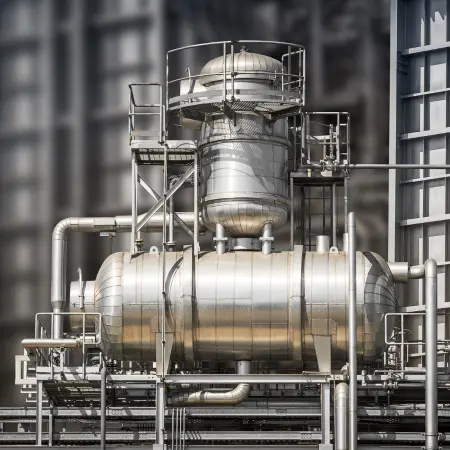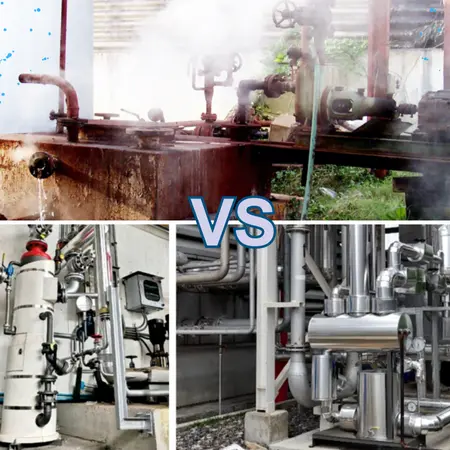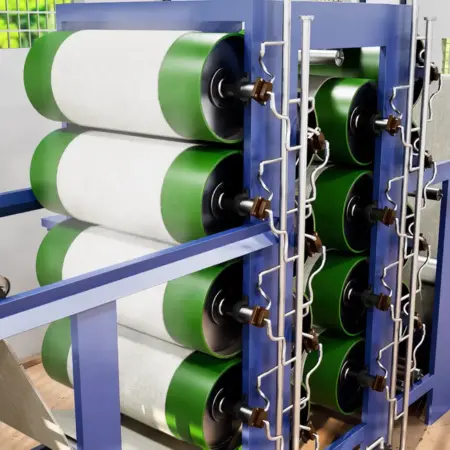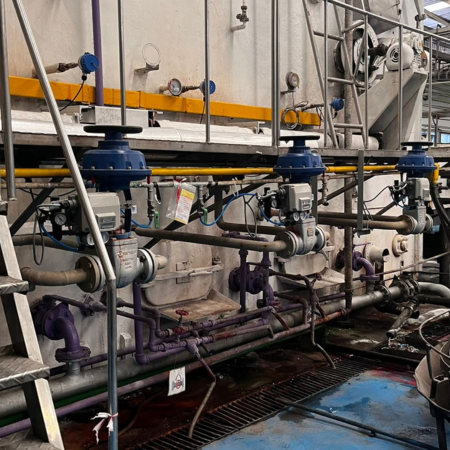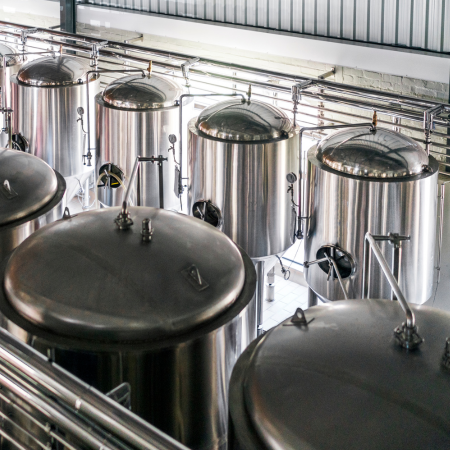Deaerators Explained : Working Principle and Key Benefits
In steam systems, the quality of boiler feedwater plays a crucial role in ensuring efficiency, uptime and safe operation of the boiler. Among the various components in a boiler system, the deaerator is one of the most critical, designed specifically to remove dissolved gases from the boiler feedwater.
By using de-aerators, oxygen and other dissolved gases can be reduced to trace levels.
How Deaerators Work
The process of mechanical de-aeration works on two basic principles of physics, the first one being Henry’s Law.
Henry’s Law states that,
“At a constant temperature, the amount of a given gas that dissolves in a given type and volume of liquid is directly proportional to the partial pressure of that gas in equilibrium with that liquid.”
The second law which governs the process of de-aeration describes the relation between solubility of a gas in a liquid and temperature of the liquid. As per this law, solubility of any gas in a liquid reduces as the temperature of the liquid increases.
The process flow of deaeration
- The water is sprayed into the deaerator as a spray or fine mist
- This mist is scrubbed with steam and hot condensate, allowing maximum contact.
- Dissolved gases are driven off and vented to the atmosphere.
- The deaerated water is collected in a storage section and maintained at a high temperature
Why is Deaeration Important
- Oxygen Removal
Among all dissolved gases in boiler feedwater, oxygen is the most corrosive. Even trace amounts can lead to severe pitting, compromising the integrity of boiler tubes, steam drums, and other pressure components.
A combination of oxygen and water creates a highly corrosive mixture. The rate of corrosion doubles with every 18°F (about 10°C) rise in temperature. When iron corrodes, it forms soluble bicarbonates that offer no protective layer on the metal surface. This process also releases carbon dioxide (CO₂), which contributes further to corrosion.
Oxygen-related corrosion typically appears as pitting, most often observed at the water line or near the top of the steam drum. Over time, these pits can lead to structural failure of boiler components and significantly hinder heat transfer efficiency. Additionally, such corrosion can affect the functioning of critical components like pressure reducing valves and steam traps.
Controlling Dissolved Oxygen
Oxygen can be removed from the feed water, both by mechanical or chemical de-aeration. The amount of dissolved oxygen present in water is very dependent on the feedwater temperature.
As water temperature increases, its ability to retain dissolved oxygen decreases significantly:
- At 20°C, oxygen solubility is approximately 9 ppm
- At 60°C, it drops to 5 ppm
- At 90°C, it’s just under 2 ppm
- At 100°C, oxygen content is theoretically zero
By heating the feedwater (for example, via direct steam injection), the demand for chemical treatment is greatly reduced. This not only lowers chemical costs, but also minimizes the total dissolved solids (TDS) in the system—leading to fewer blowdowns and improved overall boiler efficiency.
- Carbon Dioxide Removal
Carbon dioxide (CO₂) is one of the primary culprits behind corrosion in condensate systems. In fact, many failures in condensate recovery systems can be traced back to inadequate feedwater treatment that allows CO₂ to remain in the system.
Carbon dioxide enters the system in two forms:
- Dissolved CO₂ directly present in the feedwater
- Bicarbonates, which decompose under heat to release CO₂
Once in the boiler, CO₂ is carried along with the steam and eventually condenses in the return piping, where it reacts with water to form carbonic acid (H₂CO₃):
CO₂+H₂O→H₂CO₃
Mitigating CO₂-Related Corrosion
Heating the feed water and maintaining it at a high temperature prior to its delivery to the boiler, in the feed tank can drive off both oxygen & free carbon dioxide. Any remaining oxygen can then be dealt with by the addition of a chemical oxygen scavenger such as catalysed sodium sulfite.
- Removal of Other Non-condensable Gases
Furthermore, the de-aerator also helps in driving off other dissolved gases present in the feed water, which otherwise, will be carried along with steam through the distribution system and occupy volumes and migrate to the heat exchange surface, forming an insulating film.
Such gas films are very effective insulators. As an example 1mm of air film can be equivalent to 13000 mm of copper metal. These gases don’t condense into liquid as readily as steam & will not only cause hindrance to the flow of steam but will also hamper the energy transfer process, If not treated properly in the feed tank itself.
Benefits of Deaerators
Properly designed and maintained deaerators play a crucial role in removing these non-condensable gases before the feedwater enters the boiler. Deaerators improve steam quality, enhance energy efficiency, and significantly reduce maintenance and chemical treatment costs—delivering long-term operational savings and greater equipment reliability.

